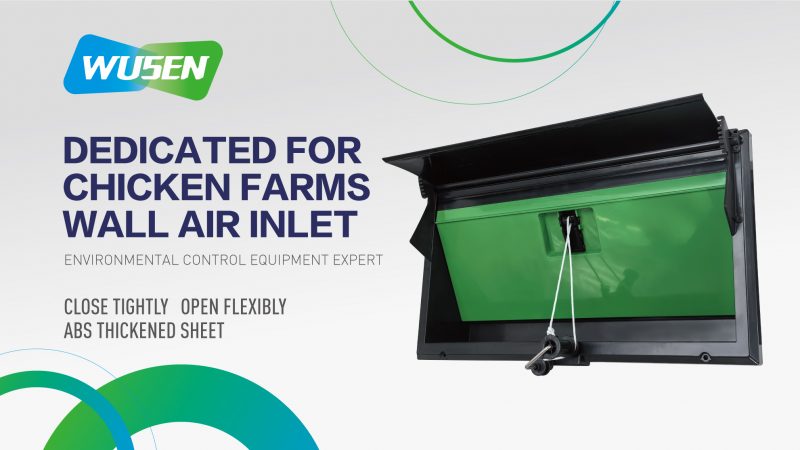Poultry Ventilation Systems: Inlet Management Guide

When discussing poultry house ventilation, people often focus on exhaust fans. However, even the most powerful exhaust fans will fail without a properly designed and managed component—the air inlet.
Think of the ventilation system as the lungs of the poultry house. The exhaust fan is like a diaphragm, expelling stale air. The air inlet is like the nose and mouth, precisely controlling the amount of fresh air drawn in. Poorly managed air inlets are like trying to breathe through a pinched straw—the entire system will struggle.
Why air inlets are crucial, and how to manage them for optimal environmental control.
The Primary Function of Air Inlets: More Than Just a Hole
The primary function of air inlets is not merely to allow air in, but to guide and regulate it. A well-designed air inlet system achieves two key objectives:
Air velocity and delivery distance: It forces incoming air in at high speed, creating a jet of air flowing along the ceiling. This is crucial for the following:
Air Mixing: In cold weather or with extremely low ventilation, high-speed airflow mixes with warm, still air on the ceiling before reaching the poultry house. This prevents cold drafts and air stratification, ensuring uniform temperature throughout the house while providing necessary fresh air.
Air Flow Range: It ensures fresh air reaches the center of the house, eliminating dead zones where gases and moisture accumulate.
Air Direction: Properly adjusted air inlets guide airflow along the ceiling, warming it before it descends to the height of the house. This utilizes the rising “hot airflow” as a natural mixer, maximizing energy efficiency.
Consequences of Improper Air Inlet Management
Improper air inlet management can lead to a range of problems directly impacting poultry health and productivity:
Poultry Chilling: If air inlets are too large, air blows directly onto the poultry, causing them to chill, become stressed, and increase their risk of disease. This is especially common during the brooding period.
Poor air mixing: If the inlet air velocity is insufficient, fresh air will sink directly to the ground and fail to mix with the warm air on the ceiling. This leads to localized overheating, condensation, and uneven gas distribution.
Negative pressure imbalance: Ventilation systems rely on negative pressure to operate. If there is an unexpected opening that conflicts with the controlled inlet (e.g., leaks, poorly sealed doors or windows), the system will not be able to guide the air correctly. The result is an unstable and unpredictable airflow pattern.
Inlet Type: Choosing the Right Tool
Ceiling Inlets: Efficiently achieve good air mixing in all seasons. They release air at the top of the ceiling, maximizing the mixing and heating distance.
Sidewall Inlets: The most common type. Their baffles (damperes) are designed to guide incoming air along the ceiling. Their performance depends entirely on proper static pressure and opening adjustment.
